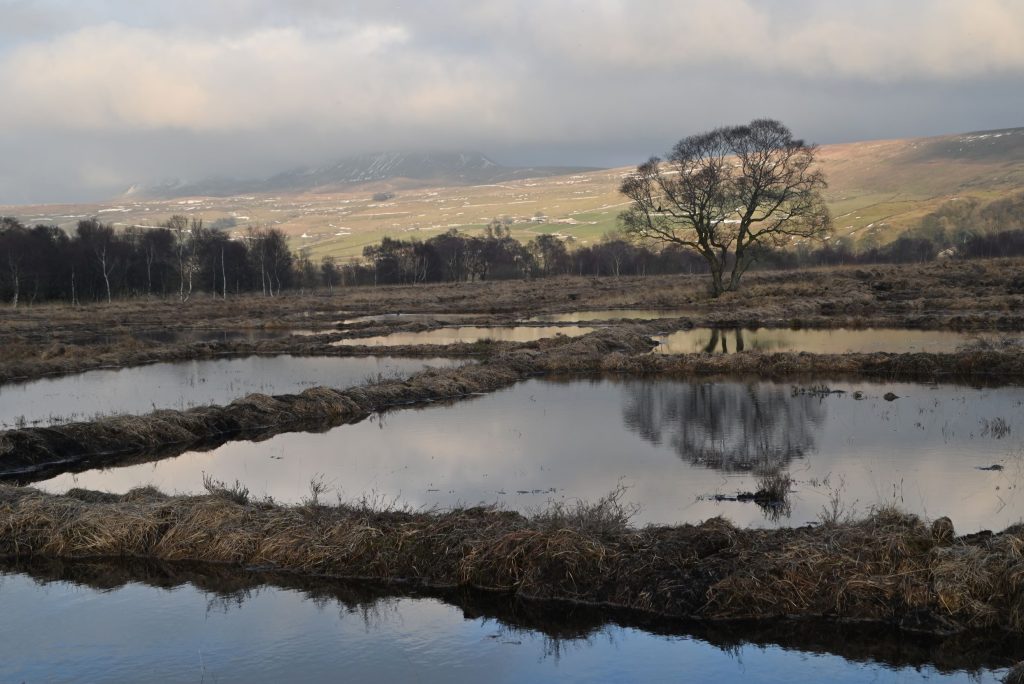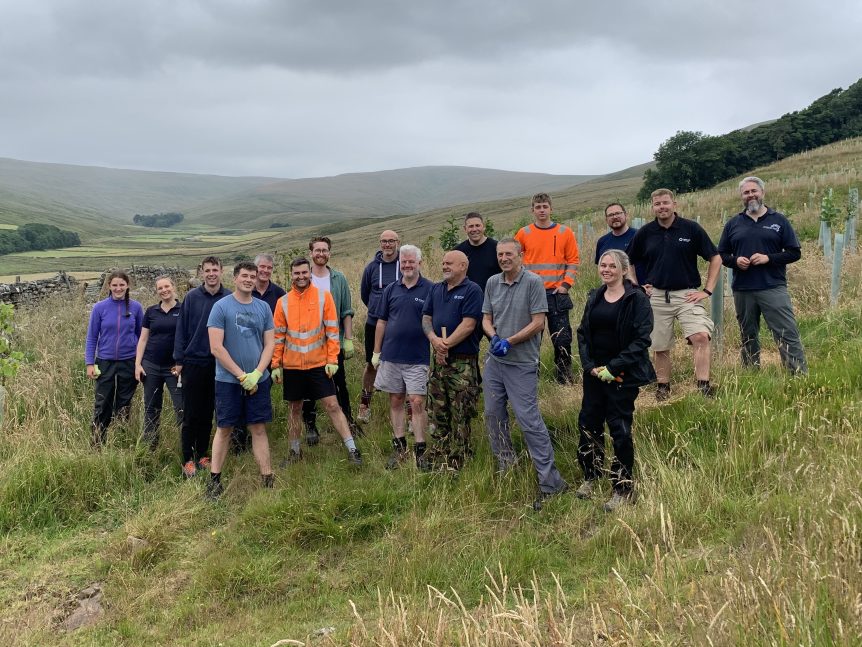Environmental Stewardship
Objective
Achieve net positive environmental outcomes
Goals
Operate to the highest standard of environmental management and control
Achieve biodiversity net gain and contribute to national biodiversity and land management strategies
Build collaborative partnerships and support academic research to enhance the environment and cultural heritage
“It’s a truly momentous occasion as we finish the planting of our Queen’s Wood and, thanks to the support of local volunteers, have even exceeded our 17,000 target. We’re excited to watch the woodland mature and thrive in the years to come – becoming a treasured space that everyone can enjoy.”
Stuart Wykes, director of land and natural resources - Europe West
The natural environment is one of the UK’s most valuable assets and helps to define us as a nation. We rely on our blue and green spaces for food, water and the air we breathe. A healthy environment is vital for our mental and physical wellbeing, economic prosperity and communities.
Highlights
Environmental management
We have a robust environmental management system and site procedures in place to help manage the environmental impacts of our activities and operate to the highest standards of environmental management and control. Our Environmental Management System (EMS) is central to our approach, with 329 operational sites certified to ISO 14001 Environmental Management Systems Standard.
Continuous improvement is fundamental to an effective EMS, and we constantly look for ways to improve our environmental performance, including how we document it.
Air quality
It is important that we take steps to ensure our business has a negligible impact on air quality and continue to reduce emissions where we can. Particulate emissions may arise from point sources, such as cement production stacks or as emissions from quarrying, open storage of materials, transfer of materials through uncovered conveyors, and from loading and unloading operations.
Our cement and lime operations use the best available technology to abate and minimise emissions into the atmosphere. We monitor our emissions using our environmental management system, and our performance is overseen by the environmental regulators across the UK.
Enhancing and restoring biodiversity
We have over 187,000 acres of land under our stewardship, and over 85 sites designated as having high biodiversity value. We recognise our duty to manage these assets responsibly and facilitate positive outcomes for our business, the community and future generations.
One of our main goals is to achieve biodiversity net gain at our sites and contribute to national biodiversity. In 2022 we restored over 187 hectares of land, all our sites have restoration plans and over 100 sites have biodiversity management plans to ensure we are protecting and enhancing biodiversity.
One of the ways we do this is through tree planting. Tarmac planted almost 20,000 trees throughout 2022, and over 17,000 of these were as part of the Queen’s Green Canopy initiative.
In total, 19 species of tree and shrubs were planted in Panshanger Park to provide resilience to climate change, pests and diseases.
Tarmac and its partners have also been instrumental in restoring threatened chalk grassland located at Ladds Farm in Snodland, Kent. Chalk grassland often houses more than 40 plant species per square metre, which is double that of intensive grassland habitats. We have cut back acres of scrub, reinstated historic fencing and improved the connectivity of the farm to allow for more targeted and effective grazing.
Wildlife conservation
We are committed to supporting wildlife and biodiversity across the UK, preserving populations of protected species and enhancing their habitats. An example of this is a ‘re-wetting’ project at Swarth Moor, a Site of Special Scientific Interest (SSSI), after concerns were raised that it was drying out and was increasingly attracting species that would not typically be found in such habitats. Following the successful restoration, the great crested newt, which relies on clean water ponds for breeding, has been observed in record numbers.
In 2022, we also helped on projects to encourage sand martins, trout, water voles and a range of birds in the areas surrounding our sites.

Replenishing coastlines
At Tarmac we aim to be a good neighbour across all our operations, including our marine operations. Tarmac Marine operates in the southern North Sea, English Channel, Bristol Channel and Irish Sea. We actively engage with other marine industries, including fishermen, and local marine conservation groups to ensure that we avoid any adverse effects from our activities. We collaborate with organisations to make active contributions - one of the most important being the part we play in sea defence and beach replenishment schemes.
In 2022, as part of our partnership with specialist dredging contractor Van Oord, Tarmac supplied around 450,000 tonnes of sand for coastal defence work along the Lincolnshire coast. The sand was sourced from a Tarmac Marine licensed area six miles offshore. Tarmac Marine operates from 18 licensed dredging areas where we have gained consent to dredge after a rigorous environmental assessment and consultation process to demonstrate that dredging activity will not result in unacceptable environmental impacts.
Working in partnership
Tarmac continues to work in partnership with local communities, wildlife trusts and other organisations invested in protecting the environment across the UK. We maintained 39 biodiversity or wildlife partnerships in 2022, two of these are detailed below.
At our Crown Farm site, with Cheshire Wildlife Trust, our North West area’s senior leadership team helped create a wood chip footpath along the edge of one of the lakes, which will provide access for school groups.
Tarmac is in its third year of a ten-year partnership with the Yorkshire Dales Millennium Trust, where so far, 5,400 trees have also been planted across the Yorkshire Dales through Tarmac’s support. In 2022, employees from Tarmac sites across the Yorkshire Dales took part in a day’s volunteering with Yorkshire Dales Millennium Trust (YDMT). The volunteers undertook general site maintenance at Swinesett Hill surveying young trees, helping the landowner prepare for any replanting required. This involved marking trees that had not survived, straightening tree guards and weeding, where required, to help the young woodland to flourish.

Archaeological heritage
It is important to us that we support archaeological discoveries as well as conservation work. We support several archaeological digs and investigations every year to determine if any historical sites exist on our land.
Over 20 locations were checked for archaeological potential in 2022, with an archaeological dig at a Tarmac quarry in Scotland finding evidence of a potential Roman battle on a former ironworking settlement with some findings dating back to around 2,000 BC.
Looking forward
In 2023, we aim to launch a biodiversity net gain strategy to establish the biodiversity baseline at our sites and identify opportunities to improve. We will continue to develop our ongoing relationships and partnerships with environmental bodies to support and deliver our restoration commitments and look to create new opportunities.
